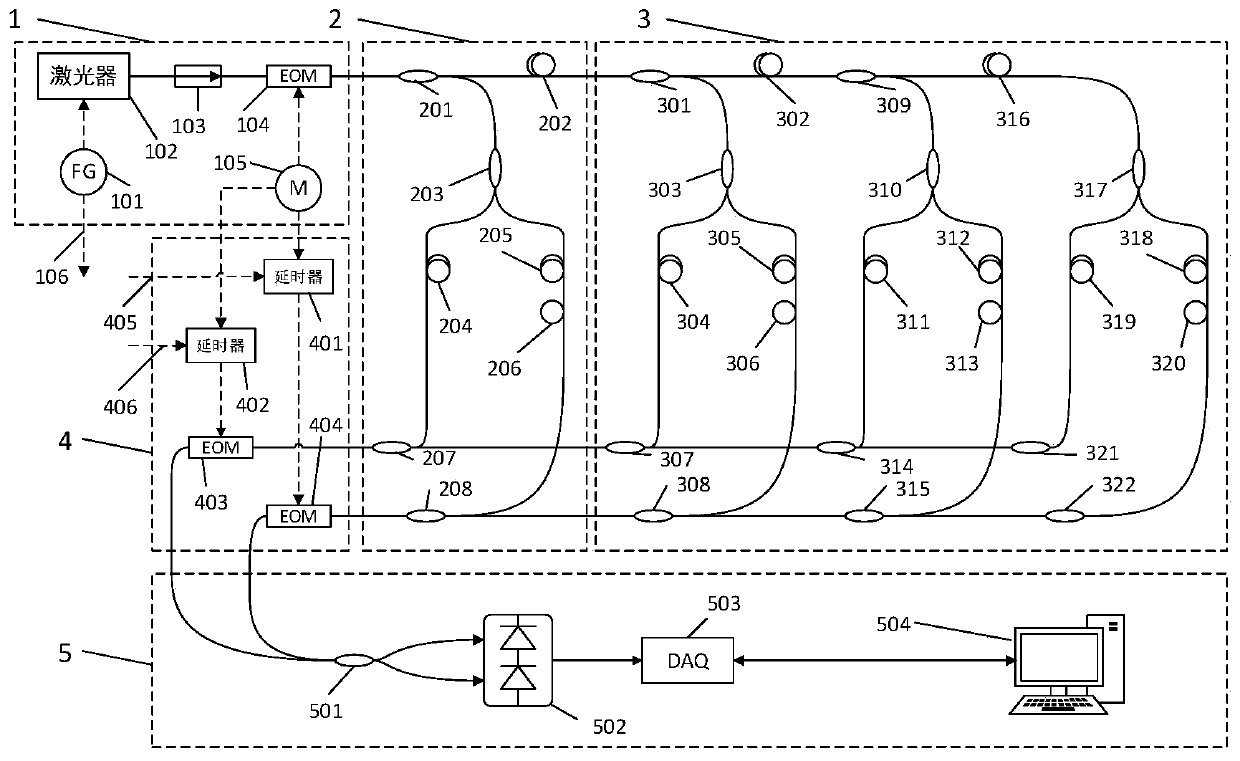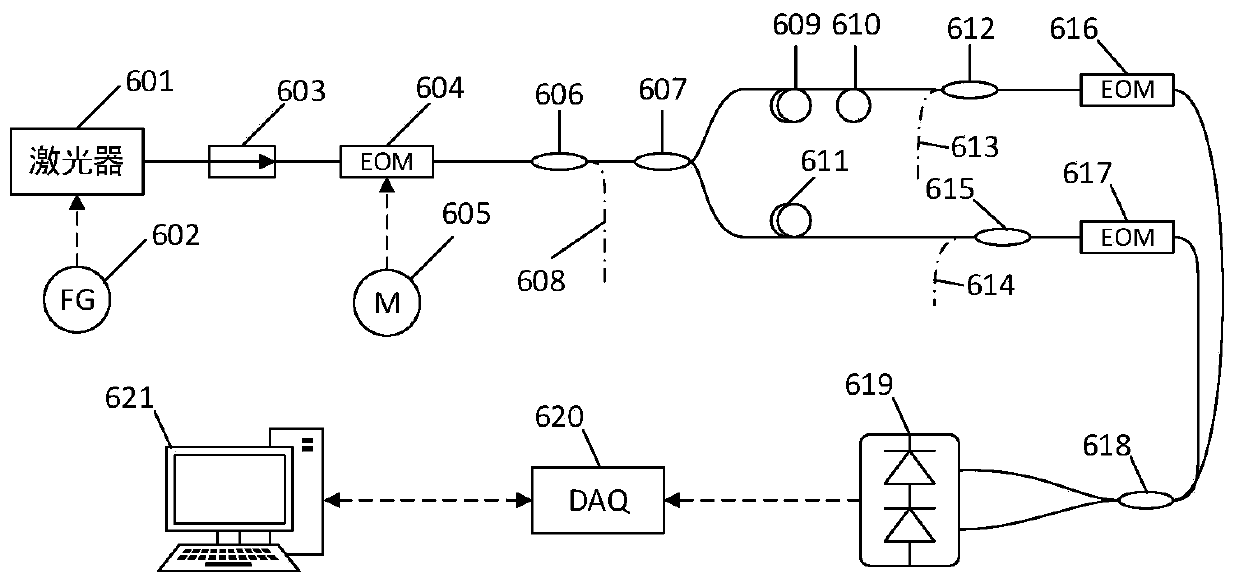PGC multi-sensor measurement system using pseudo-random code division multiplexing
A pseudo-random code and multi-sensor technology, applied in the field of photoelectric detection, can solve the problems that are not suitable for large-scale multiplexed array applications, cannot be continuously observed by a single sensor, and the precision of the limited light source can be adjusted, so as to achieve maximum design flexibility, Good temperature stability and anti-vibration stability, the effect of small changes
- Summary
- Abstract
- Description
- Claims
- Application Information
AI Technical Summary
Problems solved by technology
Method used
Image
Examples
Embodiment
[0076] Implementation example - three-component fiber optic seismometer for shallow wells based on random code multiplexing scheme
[0077] The optical path diagram of the embodiment is as follows figure 1 As shown, the entire optical fiber system includes a highly stable light source and modulation module 1, a sensor measurement module 2, a cascaded sensor array 3, a random code demodulation module 4, and an interference demodulation module 5. Among them, the interference demodulation module is connected to the The PC terminal on land performs demodulation, and the entire seismometer system includes two modules, the sensor measurement module 2 and the sensor cascade array 3, and there are no active components. The highly stable light source and modulation module 1, the random code demodulation module 4 and the interference demodulation module 5 are located on the well, and are separate systems that provide demodulation control over the entire seismometer.
[0078] The overal...
PUM
 Login to View More
Login to View More Abstract
Description
Claims
Application Information
 Login to View More
Login to View More - R&D
- Intellectual Property
- Life Sciences
- Materials
- Tech Scout
- Unparalleled Data Quality
- Higher Quality Content
- 60% Fewer Hallucinations
Browse by: Latest US Patents, China's latest patents, Technical Efficacy Thesaurus, Application Domain, Technology Topic, Popular Technical Reports.
© 2025 PatSnap. All rights reserved.Legal|Privacy policy|Modern Slavery Act Transparency Statement|Sitemap|About US| Contact US: help@patsnap.com



